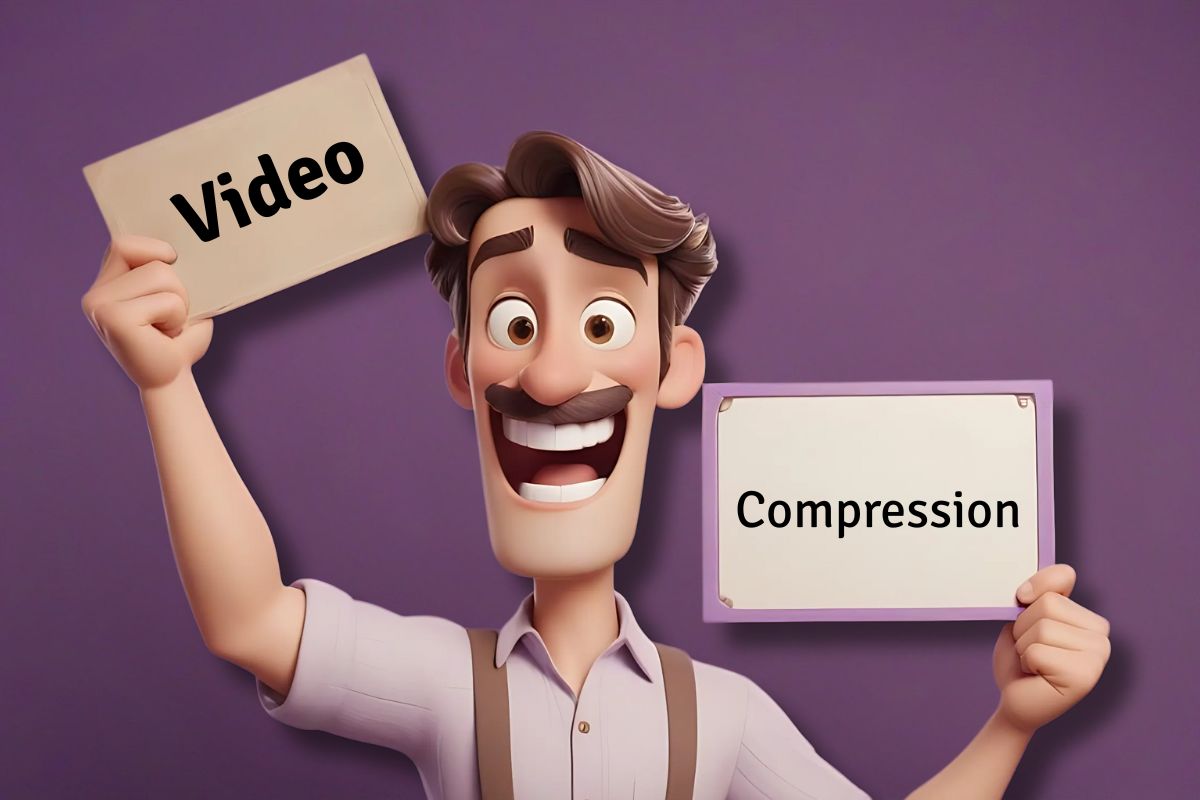
Video streaming has become such a normal part of our lives that we hardly stop to think: how is it possible to transmit high-quality video in real-time over the internet? The answer lies in one powerful technology: video compression.
Why Compression Matters?
Let's consider a typical 1080p video:
- Resolution: 1920 x 1080 pixels
- Color depth: 24 bits per pixel
- Frame rate: 30 frames per second
Uncompressed, this equals almost 1.5 gigabits per second—far too large to store, share, or stream efficiently. That's where compression comes in.
What Are Codecs?
The backbone of video compression is the codec (short for coder-decoder).
- Encoding: compresses the data to make it easier to store and transmit.
- Decoding: decompresses it, reconstructing the video as close as possible to the original.
Codecs aren't limited to video—they're also used for audio, images, and other digital signals. But in this post, we'll focus on how they make video practical.
Two Ways Video is Compressed
1. Intra-Frame Coding (Spatial Compression)
This is similar to how still images are compressed:
- Redundant or less visible details are reduced.
- The remaining data is stored more efficiently.
Each video frame is treated like a standalone picture. This alone saves a lot of space.
2. Inter-Frame Coding (Temporal Compression)
Most videos have many frames that barely change from one to the next. Instead of storing every frame in full, codecs look for similarities:
- Identical Frames: If nothing changes, the encoder saves one frame and simply repeats it.
- Block-Based Compression: Frames are divided into blocks. Blocks that don't change are reused.
- Motion Estimation & Compensation: When blocks move slightly, codecs record motion vectors showing how they shift. Instead of saving a new block, the codec saves instructions on how to move it.
- Residual Frames: Any remaining differences are stored as smaller "residual" frames, which are easier to compress than full images.
The result: a sequence of reference frames plus residual frames that massively reduce video size.
Putting It Together
Traditional video compression blends both:
- Intra-frame coding to reduce redundancy within frames.
- Inter-frame coding to reduce redundancy between frames.
This hybrid approach is employed by popular standards such as H.264 (MPEG-4 AVC), H.265 (HEVC), and VP9. These codecs balance compression efficiency and visual quality, while keeping processing demands reasonable.
The Future of Video Compression
While today's codecs are highly refined, research is ongoing. Machine learning and AI-based approaches show promise in outperforming traditional block-based methods. The goal: maximize perceptual quality while minimizing file size.
Although current standards are tough to beat, many believe end-to-end trainable AI codecs will eventually set a new benchmark for compression technology.
Why This Matters for You?
At Video2Edit, video compression isn't just theory—it's a tool you can use every day. With our online video compressor, you can:
- Reduce large video file sizes in seconds, making them easier to upload, email, or share on social platforms.
- Maintain quality while saving space, thanks to advanced codec-based compression.
- Choose the right balance between file size and resolution, perfect for students, professionals, or content creators.
And compression is just the start. Video2Edit also offers:
- Format conversion – change videos to MP4, AVI, MOV, or WebM for universal compatibility.
- Basic video editing tools – cut, merge, or resize video before or after compressing.
- Audio extraction – pull out the soundtrack or voiceover when you only need the audio.
With Video2Edit, you don't need complicated software—everything happens directly in your browser, quickly and securely.
In Conclusion
Video compression is what makes modern media possible—whether you're streaming, sharing, or storing files. By using advanced codecs and smart compression techniques, Video2Edit helps you take control of your video content with ease.
Try Video Compression with Video2Edit today and see how simple it can be!

